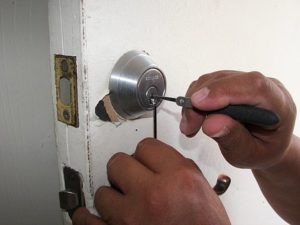There is a chance when the lock was re keyed assuming you had some door locks keyed alike or keyed to existing locks the person who did the re keying didn t get the pins completely seated in the key cylinder.
Key won t turn in lock door.
Spray the door key with a graphite based lubricant.
Spray the lock with lubricant to remove dirt and dust.
This is the correct position for the pin tumblers to align.
Outdoor locks can collect a lot of dirt and dust inside the lock cylinder.
After a long day at work the last thing you want is to come home put your key in the lock and find that it won t turn.
Push your key in as far as it will go.
In most cases a spritz of dry lubricant will be sufficient to free up the plug and allow you to open your door.
If there is a broken tailpiece in your door lock then there is a chance the key will keep turning in the door lock.
Debris or ice from cold weather may be causing problems with the cylinder or you might simply be using the wrong key.
Keyed cylinders are spring loaded with a series of pins that allow the cylinder to be turned if the correct key is inserted.
Our engineers carry the necessary replacement parts to repair most locks.
It s possible that there is an issue with the lock cylinder.
Slide the key in the lock and tap lightly on the.
Forcing it could break the key in the lock.
Sometimes dust and dirt collect inside the lock cylinder.
Faulty lock the internal mechanism could be broken or worn.
The key is inserted into the lock cylinder to allow the lock bolt latch to be engaged.
If your lock is brand new.
Key is hard to turn or won t go in the lock don t force the key.
When that happens the dirt can cause the pins to stick in a partially raised position preventing the plug from turning.
Turn the key so that the keyway slot is in the exact position it was in when you inserted the key.
You may be able to take care of the problem yourself or you may need to call a locksmith for help.















































